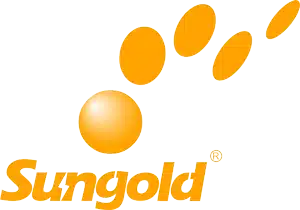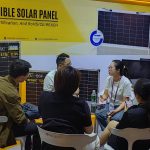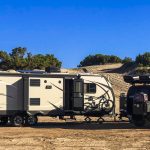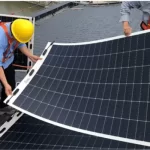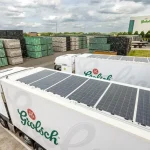Solar energy is no longer a niche technology—it’s a cornerstone of modern sustainable business practices. For B2B dealers and retailers, understanding how solar panels generate energy is critical to advising clients, optimizing installations, and maximizing ROI. In this 2,500+ word guide, we’ll break down the science, math, and strategies behind solar panel energy production-Solar Panel Produce, tailored for commercial decision-makers.
How Solar Panels Generate Electricity: The Science Simplified
The Photovoltaic (PV) Effect: Turning Sunlight into Power
Solar panels operate on the photovoltaic effect, where sunlight excites electrons in silicon cells, creating direct current (DC) electricity. This DC power is converted to alternating current (AC) via inverters, making it usable for commercial grids or on-site operations.
Key Metrics for Businesses:
- Power (kW): The panel’s maximum output under ideal conditions.
- Energy (kWh): Actual electricity generated over time (e.g., daily or monthly).
- Efficiency: The percentage of sunlight converted to electricity. Modern panels average 18–22%, with premium models reaching 23–24%.
For example, Sungold’s 550W solar panel achieves 22.8% efficiency, producing 10–15% more energy than standard models—a critical selling point for ROI-focused clients.
Solar Panel Output: What to Expect
Typical Power Ranges
| Panel Type | Power Output (W) | Efficiency | Ideal Daily Output* |
|---|---|---|---|
| Standard Monocrystalline | 300–400 | 18–20% | 1.2–2.0 kWh |
| High-Efficiency | 400–550 | 21–24% | 1.6–3.3 kWh |
| Commercial-Grade | 550–700+ | 22–25% | 2.2–4.2 kWh |
*Assumes 5 peak sun hours daily.
Why Efficiency Matters
A 1% increase in efficiency can boost annual energy production by 3–5%, translating to faster payback periods. For instance, a 400W panel at 22% efficiency generates 8–12% more energy than a 19%-efficient model.
6 Factors Impacting Solar Energy Production
Sunlight Exposure
- Peak Sun Hours: The number of hours sunlight intensity reaches 1,000 W/m².
- Arizona: 6.5 hours (ideal for solar).
- Germany: 2.5–3.5 hours (requires larger systems).
Orientation & Tilt
- Optimal Angle: Latitude ± 15°. For New York (40°N), a 25–40° tilt maximizes annual yield.
- Direction: South-facing (Northern Hemisphere) or North-facing (Southern Hemisphere).
Temperature
- Heat Derating: Solar panels lose 0.3–0.5% efficiency per °C above 25°C.
- Solution: Sungold’s panels feature low-temperature coefficients (-0.29%/°C), minimizing losses in hot climates.
Shading
Even 10% shading can reduce output by 30–50%. Use microinverters or optimizers (e.g., Enphase IQ8) to mitigate losses.
Panel Quality & Maintenance
- Degradation Rate: Premium panels degrade 0.3–0.5% annually vs. 1% for budget options.
- Cleaning: Dust can reduce output by 5–25%. Automated robotic cleaners (e.g., SolarCleano) boost ROI for large arrays.
System Design
- Inverter Sizing: A 10–20% oversized inverter allows future expansion.
- Battery Storage: Lithium-ion batteries (e.g., Sungold’s 10kWh system) store excess energy for nighttime use.
Calculating Energy Output: Formulas for Businesses
Basic Formula
Daily Energy (kWh)=Panel Wattage (W)×Peak Sun Hours×0.85 (System Losses)
Example:
A 550W Sungold panel in California (5.5 peak hours):
550W×5.5×0.85=2,566 Wh/day (or 2.57 kWh)
Scaling for Commercial Needs
To power a warehouse requiring 1,000 kWh/month:
Panels Needed=2.57 kWh/panel/day×301,000 kWh≈13 panels
What Can a Single Solar Panel Power?
| Appliance | Power Consumption | Runtime (Per 2.5 kWh/Day) |
|---|---|---|
| LED Lighting | 10W per bulb | 250 hours (10 bulbs) |
| Laptop | 50W | 50 hours |
| Refrigerator | 150W | 16 hours |
| HVAC System | 3,500W | <1 hour |
Key Takeaway: Single panels suit small loads, but commercial operations require scalable systems.
8 Strategies to Maximize Solar ROI
Smart Installation
- Use 3D modeling tools (e.g., Aurora Solar) to optimize tilt and spacing.
- Avoid “hot spots” by ensuring 6–12 inches of airflow beneath panels.
Hybrid Systems
Combine solar with wind turbines or diesel generators for 24/7 reliability.
Demand Management
Shift energy-intensive tasks (e.g., refrigeration) to daylight hours.
Government Incentives
- U.S.: 30% Federal Tax Credit (ITC) until 2032.
- EU: VAT reductions and feed-in tariffs (e.g., Germany’s EEG).
Monitoring & Analytics
Platforms like SolarEdge Insights provide real-time alerts for underperforming panels.
Anti-Soiling Coatings
Hydrophobic coatings reduce dust accumulation, cutting cleaning costs by 40%.
Panel Upgrades
Bifacial panels (e.g., Sungold’s 700W model) capture reflected light, boosting output by 10–20%.
Predictive Maintenance
AI-driven tools (e.g., DroneDeploy) detect microcracks or corrosion early.
FAQs for Commercial Clients
Q: How much roof space is needed?
A: 100 kW system ≈ 5,000–7,000 sq. ft. (depending on panel wattage).
Q: Can solar power industrial machinery?
A: Yes, but high-power machines (e.g., 50 kW compressors) require customized arrays + storage.
Q: What’s the payback period?
A: 4–7 years in sunny regions, with 25+ years of near-free energy post-breakeven.
Conclusion: Solar Is a Strategic Investment
A single solar panel’s output hinges on technology, environment, and design—but when optimized, it delivers unmatched long-term value. For B2B dealers, emphasizing high-efficiency panels, smart monitoring, and tailored financing (e.g., Sungold’s leasing programs) can unlock client trust and recurring revenue.
Ready to Empower Your Clients?
Explore Sungold’s commercial solar solutions, backed by 25-year warranties and 24/7 technical support. Contact us for a customized ROI analysis today.

